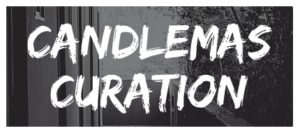Eilidh Marshall
Trigger Warning
This work explores the theme of women’s insecurity in everyday travel. There are mentions of the murders of Sarah Everard, Nicole Smallman and Bibaa Henry, as part of a more general discussion of street harassment, physical/psychological threat, and violence against women.

The last year has seen radical changes in our ways of behaving in and moving through our everyday spaces. Women’s fears, however – their physical insecurities and the associated emotional strain – remained; indeed, they were strengthened.
This practicum explores the theme of insecurity in everyday travel for women (and people who present, but may not identify, as women), and was inspired in part by the March 2021 murder of Sarah Everard by a Metropolitan Police officer. It is worked in cross-stitch, a traditional form of embroidery used across the world and which was for centuries one of very few ‘acceptable’ female pastimes.[i] I was intrigued by discussions in class of the practice of ‘craftivism’[ii] to deconstruct the barrier between the ‘private’ and ‘public/political’ spheres, claiming or reclaiming arts and crafts as modes of political expression.
I wanted to play on the traditional motifs usually associated with cross-stitch, usually depicting domesticity, family, or (Christian) morals. I used immediately recognisable images and innocuous motifs – ‘love hearts’, flowers, and women holding hands – to imbue their subversion with a greater shock factor, and therefore discursive power, on second glance.
The sampler depicts two women together, followed by a text message seeking assurance of a friend’s safe arrival: a common occurrence in the modern everyday life of women as they take casual, but potentially dangerous, journeys home. The stitching of a single ‘tick’ indicates a message delivered, but unread, while the bouquet of flowers at the bottom of the sampler represents the flowers which are often left as markers of respect or mourning for people who are killed.
The women’s dresses are stitched in the Suffragette colours of purple, white and green, as a representation of the fight for women’s bodily and social autonomy which continues more than a hundred years after that movement began. They are also faceless: this symbolises the frightening truth that Sarah’s story reoccurs daily, to women across the world; but also the potential for ‘forgetting’ or erasure of their experiences.
Some women, of course, experience violent threat more commonly than others, and I wanted to explore the role of race in this unequally gendered travel insecurity. The women in the sampler are presented with blonde hair, a genetic trait usually carried by white people and one still associated with bodily ideals of beauty (and thus, worth). This was a conscious choice to reflect the discrepancies between the media furore over the case of blonde, ‘beautiful’ Sarah Everard[iii] and the relative lack of attention to sisters Nicole Smallman and Bibaa Henry, two Black women who were murdered in Wembley in June 2020. Their bodies were re-subjectified and violated by the Met Police officers who took selfies next to them. The case, meanwhile, was sensationalised in headlines as “The Wembley Park Murders”[iv], which served to devalue or even partially erase the loss of Nicole and Bibaa.
As a white, elite-university educated woman able to support myself in a non-manual job, my own privilege in being able to ‘reclaim’ a previously oppressive traditional practice as a political statement should also be subject to critical thought. Many women would not be able to do so: women in the Global South, women who do not have the same education opportunities, women who are forced by cultural or familial pressures to remain as domestic workers in the home, women working in textile manufacturing…
Generations of women have hoped that theirs would be the last to know the reality expressed in this sampler. Craftivism provides a safe avenue of protest in the world of COVID-19: if it is disruptive or ‘different’ enough to draw attention when the news cycle moves on, all the better.
![]()
[i] Gillow, John, and Bryan Sentence. 1999. World Textiles: a Visual Guide to Traditional Techniques. London: Little, Brown Book Group. p. 181.
[ii] Black, Shannon. 2017. “KNIT + RESIST: placing the Pussyhat Project in the context of craft activism”. Gender, Place & Culture 24 (5), pp. 696-710
[iii] Giordano, Chiara. “Sarah Everard: Everything we know about 33-year-old and what happened to her”. The Independent, 18/3/2021. Available: https://www.independent.co.uk/news/uk/crime/sarah-everard-news-missing-wayne-couzens-b1815730.html (accessed 4/4/2021)
[iv] Bashir, Martin. “Wembley park murders: PCs ‘took selfies next to sisters’ dead bodies’.” BBC, 26/6/2020. Available: https://www.bbc.co.uk/news/uk-england-london-53198702 (accessed 12/4/2021).
Click Below to Return to the Curation Front Page:
